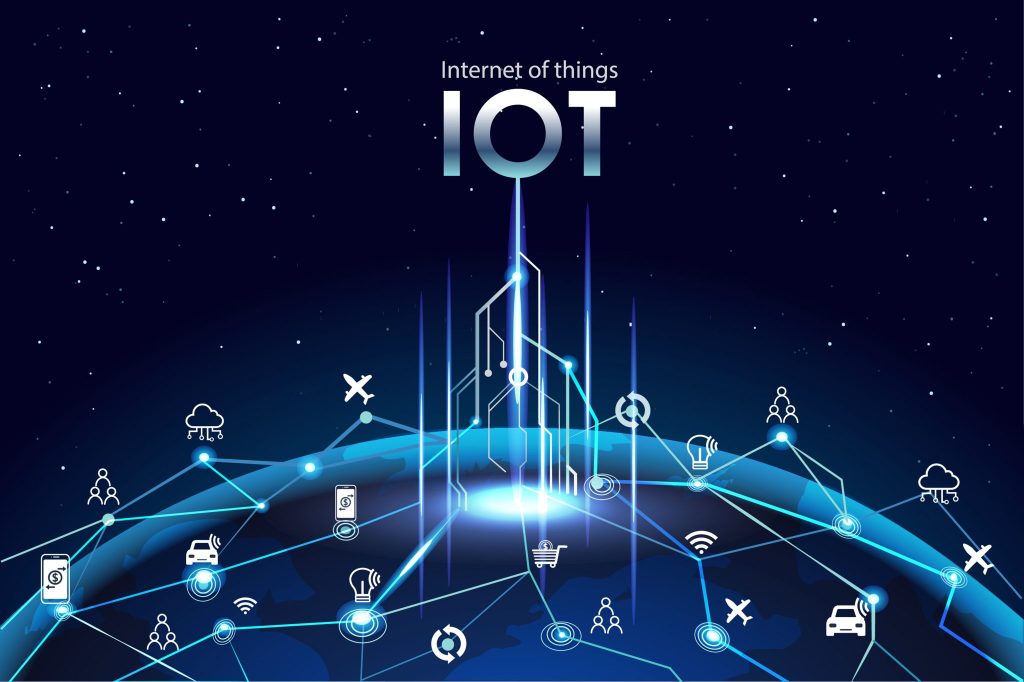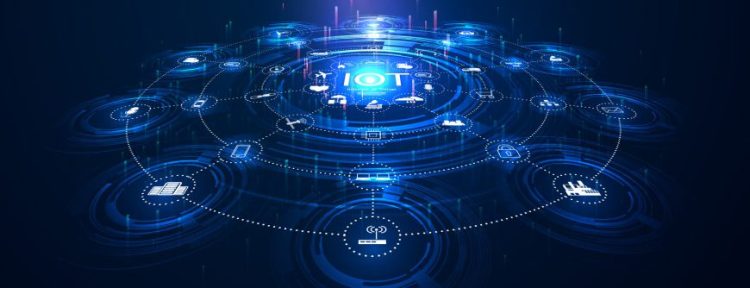The Internet of Things (IoT) is rapidly reshaping how machines, systems, and people interact, creating a hyper-connected world where devices constantly exchange data. However, as IoT expands, it faces serious challenges in security, scalability, and data integrity. Blockchain technology—best known for powering cryptocurrencies—is increasingly seen as a powerful ally in solving these problems.
This article explores the application prospects of blockchain in IoT and evaluates whether this convergence could trigger the next major wave of technological innovation.
1. The Challenges Facing IoT Today
As billions of devices—from smart thermostats to industrial sensors—come online, the IoT ecosystem becomes more complex and vulnerable. Key problems include:
- Security vulnerabilities: Many IoT devices lack built-in security, making them easy targets for hacking, spoofing, and data manipulation.
- Data silos: IoT data is often stored on centralized platforms, limiting transparency and interoperability across networks.
- Scalability issues: Managing and authenticating millions of real-time interactions across devices stretches traditional infrastructure.
- Trust deficits: In multi-stakeholder environments (e.g. supply chains), trust between devices, manufacturers, and users is difficult to guarantee.
- Centralized points of failure: A compromised server or API can bring down large portions of an IoT network.
Addressing these concerns is critical for unlocking the full potential of IoT—and this is where blockchain enters.
2. How Blockchain Complements IoT
Blockchain introduces several features that align naturally with IoT’s needs:
- Decentralization: No single point of control or failure, making networks more resilient and autonomous.
- Immutable records: Every device interaction or data transfer is recorded in a tamper-proof ledger, improving traceability.
- Identity and authentication: Devices can have unique blockchain-based identities, improving security and accountability.
- Smart contracts: These enable automation of processes between devices, such as payment execution, access control, or maintenance alerts.
- Data integrity: Blockchain ensures that once IoT data is recorded, it cannot be altered, increasing trust in the system.
This synergy makes blockchain a natural infrastructure upgrade for next-generation IoT ecosystems.
3. Key Application Scenarios
Several industries are already experimenting with or deploying blockchain-IoT integrations:
- Supply chain and logistics
- Track goods from production to delivery with verified sensor data.
- Prevent counterfeiting and unauthorized handling.
- Enable automated payments and updates via smart contracts.
- Smart cities
- Use blockchain to manage distributed sensors, traffic systems, and public services.
- Ensure secure data sharing across agencies without centralized control.
- Energy sector
- Support peer-to-peer energy trading between smart meters using blockchain.
- Automate billing and consumption reporting through smart contracts.
- Healthcare
- Track medical devices and patient wearables with real-time, secure data sharing.
- Ensure integrity of patient health records generated by IoT devices.
- Manufacturing
- Monitor equipment status and production output with IoT sensors.
- Record and verify data on blockchain for compliance and performance analytics.
These use cases demonstrate blockchain’s versatility as a foundation for trustworthy, automated, and decentralized IoT systems.
4. Potential for Driving a New Tech Revolution
The convergence of blockchain and IoT could serve as the basis for an entirely new wave of digital infrastructure and automation, driven by the following factors:
- Autonomous machine-to-machine (M2M) economies: Devices transact and make decisions without human input, using cryptocurrencies or tokens as incentives.
- Self-governing networks: Decentralized IoT systems can operate independently of cloud platforms, using smart contracts for coordination.
- Data monetization and marketplaces: Individuals or organizations could sell verified IoT data directly via decentralized platforms.
- Decentralized AI: AI models could run on edge devices and validate results or decisions through blockchain, improving trust and auditability.
In this vision, blockchain doesn’t just support IoT—it redefines it, making it more intelligent, autonomous, and economically powerful.

5. Challenges and Considerations
Despite the potential, several hurdles must be addressed for blockchain-IoT systems to reach full maturity:
- Scalability: Public blockchains currently struggle with high transaction volumes and speed, which limits real-time IoT use cases.
- Energy consumption: Consensus mechanisms like Proof of Work (PoW) are unsuitable for resource-constrained IoT devices.
- Interoperability: Standardization across devices, protocols, and blockchains is needed to enable seamless integration.
- Security at the edge: Even with blockchain, vulnerable IoT endpoints can still be exploited. End-to-end security must be prioritized.
- Cost and complexity: Implementing blockchain infrastructure may be costly or technically challenging for smaller organizations.
Overcoming these issues will require innovation at both the protocol and device levels, as well as cooperation between industry players, governments, and standards bodies.
6. Outlook: Blockchain + IoT as a Catalyst for Change
The fusion of blockchain and IoT is not a short-term trend—it’s part of a long-term transformation in how digital infrastructure is built and governed. In the coming years, we can expect:
- Increased use of hybrid blockchains combining public and private components.
- Greater adoption of lightweight consensus algorithms like Proof of Stake (PoS) and DAG-based systems for IoT compatibility.
- Expansion of decentralized data markets built on verified IoT information.
- Government and enterprise involvement in standard-setting and pilot programs.
- Edge computing integration with blockchain nodes embedded in smart devices.
If these trends continue, blockchain may indeed become the trusted layer upon which a secure, automated, and decentralized IoT ecosystem is built—ushering in a new wave of economic and technological disruption.
Conclusion
Blockchain has the potential to fundamentally reshape the future of IoT by enhancing trust, autonomy, and efficiency. While technical and operational challenges remain, the convergence of these two technologies is already beginning to redefine industries and open new economic frontiers.
If successfully scaled, blockchain in IoT won’t just solve today’s problems—it could drive a full-scale transformation in how machines and humans interact, transact, and collaborate in the digital world.
















































